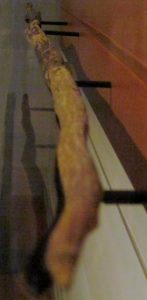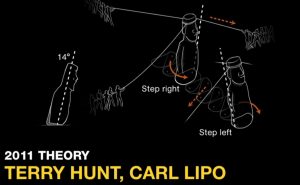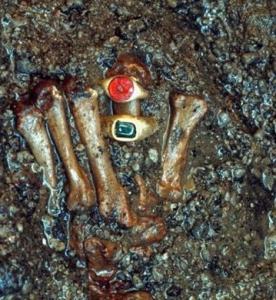The Homo neanderthalensis are often regarded as the long-lost cousins of the Homo sapiens sapiens. However, it is an ongoing debate whether the Neanderthals were a sub-species of humans, or a separate species by themselves. The analysis of Neanderthal DNA has provided the key to the many questions surrounding this member of the Homo genus.
The nuclear DNA of Neanderthals has been studied extensively in the Neanderthal genome project, which gave the conclusion that modern non-African human populations have traces of Neanderthal DNA. To explain this, Green et al. argues that interbreeding happened between Neanderthals and humans shortly after the ancestors of modern non-Africans migrated out of Africa. Hence modern African populations do not show any Neanderthal DNA traces. However, fossil records did not place humans and Neanderthals in the same geographic region at this period.
In 2015 Neanderthal remains dating to about 55 thousand years ago were discovered in Manot Cave, Israel. This bridged the gap between the fossil record and DNA record and provided evidence for both species inhabiting the region at the same period, hence inbreeding was possible (Hershkovitz 2015).
Other sections of Neanderthal DNA have also been researched on. Mitochondria, a type of cell organelle, contains small DNA loops (mtDna), which is only passed along by females (Renfrew 2018). The analysis of mtDNA from Neanderthals fossils shows that the Neanderthals have not contributed to the modern human mtDNA pool. Yet this only disapproves the flow of DNA from Neanderthals to humans through maternal lines (Wang 2013). The Y chromosome of Neanderthals has also been studied, primarily by Mendez et al. in 2016. Unlike mtDNA, Y chromosomes are passed along the paternal line. The data suggests that the Neanderthal Y chromosome is not present in modern human samples at all. Mendez concluded that mutations made the Neanderthals genetically incompatible to humans and consequently resulted in the loss of the Neanderthal Y chromosome in present-day humans.
However, for all that DNA analysis tells us, it does not tell us much about the material culture of the Neanderthals. This is where archaeology comes in. The sites and artifacts can tell us how the Neanderthals lived, what they ate, what technology they used. They used stone and wooden tools but unlike early humans, their living areas did not have specific activity sites. Their diets were highly reliant on meat, as has been revealed by isotopic analysis of their remains. It has also been argued that the rarity of “symbolic” objects such as art or ornaments in Neanderthal sites indicates “a lack of human cognitive ability and language” (Harvati 2010).
To summarize, present-day humans outside of Africa show traces of Neanderthal DNA, but there are no Neanderthal mtDNA or Neanderthal Y chromosomes in modern human populations. The current consensus among anthropologists is that Homo neanderthalensis and Homo sapiens sapiens are indeed separate species, although that might change with further research and with the discovery of more Neanderthal samples.
Further information on early hominids and the great human migration.
References cited:
Green, Richard E., et al.
2010 A Draft Sequence of the Neandertal Genome. Science 328: 710-722
Link to “A Draft Sequence of Neandertal Genome”
Harvati, Katerina
2010 Neanderthals. Evo Edu Outreach 3: 367–376
Hershkovitz, Israel, et al.
2015 Levantine cranium from Manot Cave (Israel) foreshadows the first European modern humans. Nature 520: 216–219
Link to “Levantine cranium from Manot Cave (Israel) foreshadows the first European modern humans”
Mendez, Fernando l., G. David Poznik, Sergi Castellano, and Carlos D. Bustamante
2016 The Divergence of Neandertal and Modern Human Y Chromosomes. Am J Hum Genet 98(4): 728-734
Link to “The Divergence of Neandertal and Modern Human Y Chromosome”
Renfrew, Colin, and Paul Bahn
2018 Archaeology Essentials Theories/ Methods/ Practice. Thames &Hudson, London.
Wang, Chuan-Chao, Sara E. Farina, and Hui Li
2012 Neanderthal DNA and modern human origins. Quaternary International 295: 126-129























